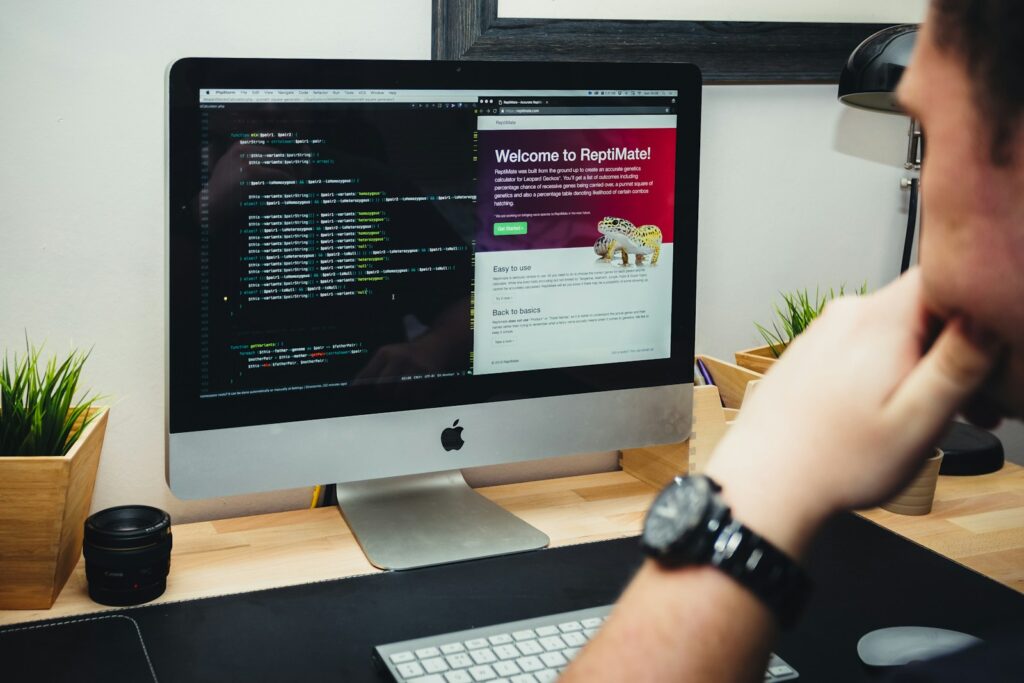In 2024, the landscape of web design is evolving at a rapid pace, driven by technological advancements, changing user expectations, and innovative design trends. As an entrepreneur, innovator, and AI enthusiast deeply entrenched in the world of web development, I’ve witnessed firsthand the transformative power of these changes. In this article, I’ll delve into the exciting possibilities that lie ahead for web design in 2024 and beyond.
Embracing AI in Web Design
AI-Powered Personalization
One of the most significant trends shaping the future of web design is the integration of artificial intelligence (AI) technologies. AI algorithms can analyze user behavior, preferences, and demographics to deliver personalized experiences. From recommending products to customizing website layouts, AI-driven personalization is revolutionizing how businesses engage with their audience.
Automated Design Tools
AI-powered design tools are streamlining the web design process, making it more accessible to professionals and amateurs alike. These tools leverage machine learning algorithms to generate design elements, suggest layouts, and optimize user interfaces. By automating repetitive tasks, designers can focus on creativity and innovation, resulting in more dynamic and visually appealing websites.
Immersive User Experiences
Augmented Reality (AR) and Virtual Reality (VR)
As AR and VR technologies become more sophisticated and accessible, web designers are incorporating immersive experiences into their websites. From virtual showrooms to interactive tours, AR and VR elements enhance user engagement and bring products and services to life in ways previously unimaginable. As the technology continues to evolve, we can expect to see even more immersive web experiences in the years to come.
Voice User Interfaces (VUI)
The rise of voice-controlled devices like smart speakers and virtual assistants is driving the adoption of voice user interfaces (VUI) in web design. Voice search, voice commands, and conversational interfaces are transforming how users interact with websites and applications. Designing intuitive and user-friendly VUIs will be essential for creating seamless experiences in the era of voice-first technology.
Responsive and Adaptive Design
Mobile-First Approach
With the majority of internet traffic now coming from mobile devices, designing for mobile-first has become a standard practice in web development. In 2024, responsive design will continue to evolve, focusing on delivering seamless experiences across a wide range of screen sizes and devices. Mobile optimization will no longer be an afterthought but a fundamental aspect of web design strategy.
Adaptive Content
In addition to responsive layouts, adaptive content strategies are gaining traction in web design. Adaptive content adjusts dynamically based on user context, device capabilities, and browsing behavior. By delivering tailored content to each user, websites can enhance engagement, improve conversion rates, and provide more personalized experiences.
Minimalism and Sustainability
Sustainable Web Design
As environmental concerns come to the forefront, sustainability is becoming a key consideration in web design. Designers are adopting minimalist aesthetics, optimizing performance, and reducing carbon footprints to create more eco-friendly websites. From lightweight code to energy-efficient hosting solutions, sustainable web design practices will play a crucial role in shaping the future of the internet.
Dark Mode and High Contrast
Dark mode interfaces are gaining popularity not only for their aesthetic appeal but also for their energy-saving benefits on OLED screens. High contrast designs improve readability and accessibility for users with visual impairments while also reducing eye strain in low-light environments. Incorporating dark mode and high contrast options will be a standard feature in web design to accommodate diverse user preferences.
Conclusion: Shaping the Future of Web Design
In conclusion, the future of web design in 2024 is marked by innovation, personalization, and sustainability. AI technologies are transforming the design process, while immersive experiences are redefining user engagement. Responsive and adaptive design approaches ensure seamless experiences across devices, while minimalist and sustainable practices prioritize efficiency and accessibility.
As we navigate these exciting developments in web design, it’s essential to stay informed, adaptable, and forward-thinking. By embracing emerging technologies, incorporating user feedback, and adhering to best practices, we can shape a brighter future for the web—one that is inclusive, intuitive, and sustainable.
Join me in exploring the possibilities of web design in 2024 and beyond. Visit LearnyHive to discover cutting-edge solutions for academic excellence, and explore my portfolio at UnikBrushes to experience the power of innovative web development firsthand.
Thank you for embarking on this journey with me, and together, let’s shape the future of web design for generations to come.




